June 29, 2022— When Susan Tessier and her husband, Tim, went out for the day, they had a lake on their Native allotment. When they came back, It was gone.
“My husband Tim and I left home in the morning and when we came back around 8:00 in the evening the whole lake had drained,” she writes in a post on the Local Environmental Observation Network site—a community science website where observers can report unusual changes in their local environment. “There was a hole that had blown out and it had drained into the ocean… It looked like it was blown up with dynamite.”
Water is the ecosystem engineer in the Arctic. The lowland tundra landscape is a network of lakes and streams, mosaicked across an expanse of frozen ground riddled with wedges of ice. The freezing, thawing, moving, eroding dynamics of these features shape the larger landscape, and determine the habitats of fish, birds, plants, mammals—and, of course people—living in the Arctic.
Abrupt lake drainage, like Tessier described, is just one way that changes in water and ice can influence the landscape, but a recent review paper conducted by University of Florida Postdoctoral Associate, Dr. Elizabeth Webb, and Woodwell Climate Associate Scientist, Dr. Anna Liljedahl, indicates events like this may become more common as the climate warms— overtaking lake expansion and slowly drying out the Arctic tundra.
Evidence of lake drainage across the literature
This new paper comes on the heels of a 2022 study that Drs. Webb and Liljedahl also authored, which came to the same conclusion: despite the processes of lake expansion and drainage continuing simultaneously across the Arctic, net lake area is trending downward. The Arctic is getting dryer.
The review complements the strengths of the previous study, compensating for some of the limitations of using geographically coarse remote sensing data. Synthesizing data from 139 sites across the Arctic, pulled from 57 different studies, Drs. Webb and Liljedahl were able to corroborate their own past findings.
“Lake size can vary from one season to the next in response to factors like precipitation or evaporation, so if you’re only looking at a limited set of remote sensing images, that can influence a trend analysis,” explains Dr. Webb. “It’s actually really exciting from a scientific rigor perspective to have two completely different remote sensing methods showing the same result.”
The review also adds weight to the idea that permafrost thaw is the primary driver in the loss of Arctic lakes. A large portion of Arctic soil is ice-rich, perennially frozen ground called permafrost, and as the climate heats up, it has begun to thaw and destabilize. That thawing can both create new ponds, and help drain them. The review indicates that decreases in size and number of Arctic lakes are more prevalent than expected, dominating the dynamic in some areas.
This contradicts another leading theory that changes in precipitation and evaporation rates— called the “water balance hypothesis” — are driving changes in lake area. Prior to Drs. Webb and Liljedahl’s investigations, the prevailing thought was that lake creation would outpace drainage rates, for at least the next several decades.
Climate Change is Opening Drainage Channels in the Permafrost
It works like this: most Arctic lakes form when wedges of ice in permafrost melt, leaving behind a depression that fills with water. The water absorbs and holds more heat, slowly thawing and eroding surrounding permafrost, growing from puddle to pond to lake over the years.
Drainage can happen in one of two ways. The first is vertically, which occurs when the permafrost beneath the lake thaws down to the unfrozen ground beneath, allowing the water to seep out the bottom. This can take hundreds or thousands of years, depending on how deep the permafrost is.
The second way is horizontally, through what Dr. Liljedahl calls “capillaries”. Ice wedges are common across the Arctic, connected by an underground network of ice that pushes the soil above them upwards as they grow, creating ridges that impede water flow. But when the tops of these wedges melt, the ridged ground above them subsides, forming narrow channels between lakes and ponds. When an expanding lake meets one of these capillary channels, the lake can drain in a matter of hours, as if the plug has been pulled on a bathtub drain.
“The formation of lateral drainage channels can interrupt this lake expansion process at any time, and I think that’s what’s making it override expansion and cause the net drying effect,” Dr. Liljedahl says. “The lake that took millenia to grow can be gone in a couple of hours.
Fewer Arctic Lakes Leave Communities in the Lurch
So what does an Arctic with fewer lakes mean? In terms of carbon, the picture isn’t clear. Since lake expansion— a common source of methane emissions— and lake drainage are happening concurrently, the net effect is not easy to discern.
“With lake drainage, it’s much less clear what the carbon consequences are. The current thinking is that lake expansion releases orders of magnitude more carbon than lake drainage, but because it’s complicated, we’re not quite sure,” says Dr. Webb. “It’s definitely an open research question.”
Dr. Liljedahl notes that there is also documentation of permafrost recovering and re-growing in drained lake beds. “Over decades, they could develop new ice-wedges and vegetation on the surface. Lake beds could experience net carbon accumulation for at least a couple of decades after drainage,” Dr. Liljedahl says.
However, the ecological consequences of fewer Arctic lakes are more certain. Fish and other aquatic species will have the size of their habitat reduced and their freedom of migration restricted, as lakes drain and connecting streams dry up. Species that feed on fish or rely on wetland vegetation, like muskrats, will also be impacted.
Small lakes are an important source of freshwater for Arctic communities. Tessier wrote in her post about the lake drainage she witnessed, “We are sad to lose the lake because in winter, after it froze up, we used to go cut ice chunks for drinking water. It has really clear water. If we get enough snow we can use snow water instead, but it is not as good.”
As more lakes drain, clean freshwater could become harder to access. Combined with the destabilization of the ground itself as permafrost thaws, Arctic communities are facing massive changes.
Dr. Liljedahl hopes that refining our understanding of water dynamics in the Arctic will aid adaptation measures. She has been awarded a three year NSF grant to continue studying the ice wedge capillary network and its role in the Arctic hydrological system. She’ll use remote sensing to quantify the distribution of the ice-wedges contributing to increased drainage. She also plans to pull data from field measurements to figure out how permanent the capillaries are, since vegetation feedback loops could help permafrost recover and return the surface to its original elevation.
“We have more to do before we can feel like the models are representing a realistic scenario. We need to better understand what is happening at the sub-meter scale with water, because the presence or absence of surface water will have a major impact on how the landscape evolves,” Dr. Liljedahl says.
Japan, EU & UK biomass emissions standards fall short and are full of loopholes, critics say
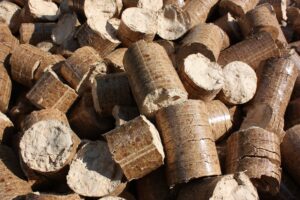
Starting this April, Japan will implement a new life cycle greenhouse gas emission standard for biomass power plants supported by its feed-in tariff subsidy for renewable energy. Designed to ensure that forest biomass usage actually reduces carbon emissions compared with fossil fuels, Japan’s new standard is similar to those already implemented by fellow forest biomass users like the United Kingdom and European Union.
The Biden administration has called for protecting mature US forests to slow climate change, but it’s still allowing them to be logged
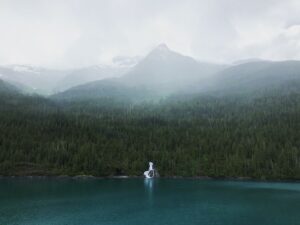
Forests are critically important for slowing climate change. They remove huge quantities of carbon dioxide from the atmosphere – 30% of all fossil fuel emissions annually – and store carbon in trees and soils. Old and mature forests are especially important: They handle droughts, storms and wildfires better than young trees, and they store more carbon.
In a 2022 executive order, President Joe Biden called for conserving mature and old-growth forests on federal lands. Recently Biden protected nearly half of the Tongass National Forest in Alaska from road-building and logging.
Read more on The Conversation.
Vineyard carbon study could aid local climate fight
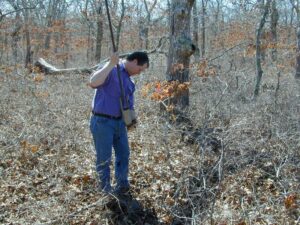
A new effort to understand how land management across the Vineyard can help fight climate change is hoped to serve as a model for other communities looking for ways to battle global warming.
The Woodwell Climate Research Center in Woods Hole has embarked on a study with the Martha’s Vineyard Commission and Sheriff’s Meadow to figure out how much carbon the Island’s natural landscape can hold. In doing so, the groups hope to uncover opportunities to store more carbon through nature and prevent it from being released into the atmosphere — a strategy that could be translated to mainland towns looking to do their bit.
Read more on The Vineyard Gazette.
Global Hotspots and Hot Moments of Nitrous Oxide Emissions
Lead PI: Dr. Jacqueline Hung
Co-PIs: Dr. Marcia Macedo, Kathleen Savage, Dr. Yushu Xia, Dr. Chris Neill
Nitrous oxide (N2O) is a prevalent, powerful—and understudied—greenhouse gas. Soils are the largest contributors of N2O emissions, but understanding of N2O fluxes is limited by lack of real-time monitoring technology. Given our broad geographic coverage and long history of innovation in measuring greenhouse gases, Woodwell Climate is well-positioned to address this gap. This award will support the purchase of cutting-edge field equipment for instantaneous N2O measurements, as well as the development of a laboratory system for measuring multiple greenhouse gases in soil experiments. Together, these will enable advances in understanding how changing soil conditions around the globe—from permafrost thaw to wetland restoration, rangeland management to tropical deforestation—affect the balance of nitrous oxide.
Can forest harvesting contribute to natural climate solutions (NCS) while maintaining economic viability?
Lead PI: Kathleen Savage
Co-PIs: Dr. Wayne Walker, Dr. Rich Birdsey, Zoe Dietrich, Emily Sturdivant
Trees accumulate carbon as they grow, making them critical climate assets. However, many forests are also commercial sources of timber and wood fiber. Forest harvesting is generally assumed to result in a net release of carbon, even after accounting for the carbon stored in wood products. As the search for practical climate solutions intensifies, a central question is whether this either-or thinking could be reframed as yes-and. In other words, whether commercial forests could be managed to meet multiple goals—providing wood and paper products, creating economic returns from natural resources, and sequestering carbon? The proposed work builds on our longstanding research at the Howland Research Forest, addressing whether shelterwood harvesting can be both an economically viable harvest practice and a natural climate solution.
Shallow or Deep: Can cover crops make soil carbon stick?
Lead PI: Dr. Taniya RoyChowdhury
Co-PIs: Dr. Jonathan Sanderman
Cover crops have the potential to enhance carbon uptake and stability in agricultural soils and, under the Inflation Reduction Act, the USDA is poised to invest billions of dollars in adoption of cover crops as a climate-smart practice. However, current understanding of the effectiveness of cover cropping to deliver climate benefits is lacking a key consideration—microbial processes. Soil microbial communities are key regulators of soil carbon dynamics, and may determine whether a given land management practice results in net loss or gain of carbon. This work will characterize microbial processes and their role in soil carbon stabilization in surface and deep soils in dynamic, mixed-species cover-cropping systems. The result will be enhanced understanding of the outcomes of cover-cropping practices, with potential policy relevance.
Mapping carbon stocks across native Cerrado and Amazon ecosystems with a known history of fire disturbance
Lead PI: Dr. Manoela Machado
Co-PIs: Dr. Marcia Macedo and Dr. Wayne Walker
The Amazon and Cerrado biomes hold vast carbon stores that are threatened by fires associated with both land clearing and a warmer, drier climate. However, the long-term responses of fire-impacted areas within these ecosystems could be dramatically different. While Amazon forests have not evolved with fire as a pressure, transitional forests and the Cerrado are adapted for—and dependent on—regular fire for sustaining their structure and function. Understanding the effects of fire disturbance on carbon dynamics and the potential pathways of recovery in these ecosystems is critical. By mapping carbon stocks in fire-disturbed ecosystems and creating larger-scale scenarios, this work will provide a rich picture of what future carbon storage could look like under a range of possible fire disturbance/recovery dynamics.
Understanding the link between climate change and colder storms is like riding a bike
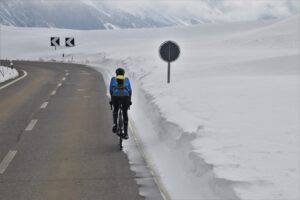
When most people think about the jet stream, if they think about it at all, it’s usually in the context of the high-altitude, fast moving wind currents of the northern hemisphere that enable speedy west-to-east long-haul flights. But the polar jet stream also plays a major role in our daily lives: the weaker it gets, the wackier our weather is, from the Texan deep freeze of 2021 to the snow bombs that have pummelled the West Coast over the past two weeks, and the winter storms now heading for the East Coast and Europe. It’s not just cold weather—an unstable jet stream can also lead to severe heat waves, droughts, or excessive amounts of rain. And the polar jet stream appears to be weakening, according to scientists, as a result of Arctic warming caused by climate change.
Salt marshes across Buzzards Bay, in Southern Massachusetts, are experiencing significant stress from climate-change driven sea level rise, but also a range of other factors including tidal restrictions and nitrogen pollution. A recent report, “Buzzards Bay Salt Marshes: Vulnerability and Adaptation Potential,” released today by the Buzzards Bay Coalition, Buzzards Bay National Estuary Program, Woodwell Climate Research Center, and the U.S. Geological Survey assessed the loss and degradation of twelve salt marsh sites in Westport, Dartmouth, Fairhaven, Mattapoisett, Marion, Wareham, Bourne and Falmouth. Using regular field monitoring alongside remote sensing data, the report reveals the widespread loss of salt marshes – in some places measuring up to 20-percent over an 18-year period.
Buzzards Bay Coalition and Buzzards Bay National Estuary Program began field monitoring salt marsh vegetation and elevation four years ago.
“We knew that salt marshes face a number of stressors, and we’d heard from our members that marshes in their neighborhoods were changing, but there was no consistent monitoring to track the health or stability of these critical ecosystems around Buzzards Bay,” explains lead author Dr. Rachel Jakuba, Buzzards Bay Coalition’s vice president for bay science.
Salt marshes are important ecosystems that filter nutrients, store carbon, provide critical habitat for fish and birds, and protect coastal properties from storm surge. Salt marshes – existing at the interface of the land and sea – are adapted to a fluctuating environment with plants capable of tolerating regular inundation with salt water; however, salt marshes’ natural ability to adapt has limits, which this report documents.
“Looking at remote imagery of salt marshes all around Buzzards Bay, we documented how the marshes changed over a couple of decades. Marshes with low elevation appear most vulnerable to sea level rise and showed the greatest loss,” said co-author Dr. Joe Costa, executive director of the Buzzards Bay National Estuary Program.
Co-author Neil Ganju of the U.S. Geological Survey added, “We’ve applied one of the tools used in this report up and down the East Coast. Marshes in the region are facing the same issues as in Buzzards Bay, and researchers are working hard to better understand marsh loss and ways to mitigate it.”
The news is not all bad though, as these iconic features of the Buzzards Bay coast are resilient and have the potential to migrate landward.
“While the headline of salt marsh loss is sobering, these are remarkable ecosystems that, when given the room to adapt, can continue to flourish. This makes the protection of adjacent lands all the more important,” said co-author Linda Deegan of the Woodwell Climate Research Center.
Scientists conducted the analysis to better understand and document salt marsh change, and the Buzzards Bay Coalition produced this report with the hope that it will be used by municipalities faced with zoning and permitting decisions near salt marshes; by natural resource agencies capable of undertaking direct marsh restoration strategies such as runneling, thin-layer deposition, ditch management and others; and by private landowners, who might consider preserving the uplands that they own adjacent to salt marshes to allow marshes to migrate — unimpeded by seawalls, roads and buildings — in the future.
“While much of this loss is attributable to climate change-driven sea level rise, some is due to legacy effects from human-made alterations like the creation of drainage ditches and marshes being altered for development and agriculture. We’re hoping that this research will be useful to planners, policymakers, and resource managers trying to mitigate the future impacts of both of those drivers,” said co-author Dr. Alice Besterman, assistant professor at Towson University.
Salt marshes across Buzzards Bay, in Southern Massachusetts, are experiencing significant stress from climate-change driven sea level rise, but also a range of other factors including tidal restrictions and nitrogen pollution. A recent report, “Buzzards Bay Salt Marshes: Vulnerability and Adaptation Potential,” released today by the Buzzards Bay Coalition, Buzzards Bay National Estuary Program, Woodwell Climate Research Center, and the U.S. Geological Survey assessed the loss and degradation of twelve salt marsh sites in Westport, Dartmouth, Fairhaven, Mattapoisett, Marion, Wareham, Bourne and Falmouth. Using regular field monitoring alongside remote sensing data, the report reveals the widespread loss of salt marshes – in some places measuring up to 20-percent over an 18-year period.
Buzzards Bay Coalition and Buzzards Bay National Estuary Program began field monitoring salt marsh vegetation and elevation four years ago.
“We knew that salt marshes face a number of stressors, and we’d heard from our members that marshes in their neighborhoods were changing, but there was no consistent monitoring to track the health or stability of these critical ecosystems around Buzzards Bay,” explains lead author Dr. Rachel Jakuba, Buzzards Bay Coalition’s vice president for bay science.
Salt marshes are important ecosystems that filter nutrients, store carbon, provide critical habitat for fish and birds, and protect coastal properties from storm surge. Salt marshes – existing at the interface of the land and sea – are adapted to a fluctuating environment with plants capable of tolerating regular inundation with salt water; however, salt marshes’ natural ability to adapt has limits, which this report documents.
“Looking at remote imagery of salt marshes all around Buzzards Bay, we documented how the marshes changed over a couple of decades. Marshes with low elevation appear most vulnerable to sea level rise and showed the greatest loss,” said co-author Dr. Joe Costa, executive director of the Buzzards Bay National Estuary Program.
Co-author Neil Ganju of the U.S. Geological Survey added, “We’ve applied one of the tools used in this report up and down the East Coast. Marshes in the region are facing the same issues as in Buzzards Bay, and researchers are working hard to better understand marsh loss and ways to mitigate it.”
The news is not all bad though, as these iconic features of the Buzzards Bay coast are resilient and have the potential to migrate landward.
“While the headline of salt marsh loss is sobering, these are remarkable ecosystems that, when given the room to adapt, can continue to flourish. This makes the protection of adjacent lands all the more important,” said co-author Linda Deegan of the Woodwell Climate Research Center.
Scientists conducted the analysis to better understand and document salt marsh change, and the Buzzards Bay Coalition produced this report with the hope that it will be used by municipalities faced with zoning and permitting decisions near salt marshes; by natural resource agencies capable of undertaking direct marsh restoration strategies such as runneling, thin-layer deposition, ditch management and others; and by private landowners, who might consider preserving the uplands that they own adjacent to salt marshes to allow marshes to migrate — unimpeded by seawalls, roads and buildings — in the future.
“While much of this loss is attributable to climate change-driven sea level rise, some is due to legacy effects from human-made alterations like the creation of drainage ditches and marshes being altered for development and agriculture. We’re hoping that this research will be useful to planners, policymakers, and resource managers trying to mitigate the future impacts of both of those drivers,” said co-author Dr. Alice Besterman, assistant professor at Towson University.
Strange thunderstorms hitting the Arctic are getting longer
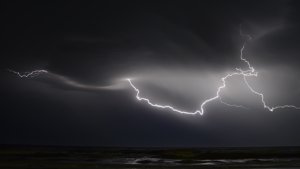
The longest thunderstorm in the history of Arctic observation was recorded in July 2022—marking an increase in extreme weather activity in a region that is generally devoid of such events.
This storm was reported by scientists from the Arctic and Antarctic Research Institute at the Russian hydrometeorological observatory on the Severnaya Zemlya peninsula, just north of Siberia. Thunderstorms are usually concentrated in the warmer parts of the planet so it is surprising to see one of this duration so near the North Pole.



